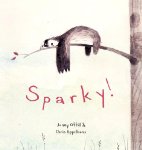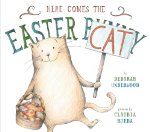I grew up in the Middle East and Europe, and the work of many of America's wonderful authors and poets was not part of my life until I moved to the States. Maya Angelou's poetry was one of the things that I discovered as an adult, and I have had a wonderful time getting to know her writing.
 Poetry for Young People: Maya Angelou
Poetry for Young People: Maya Angelou
Edited by Edwin Graves Wilson
Illustrated by Jerome Lagarrigue
Poetry Picture Book
For ages 9 and up
Sterling, 2013, 978-1-4549-0329-1
When Marguerite Johnson was three years old her parents divorced and she and her brother went to live with their grandmother in Stamps, Arkansas. The year was 1931 and segregation was “harsh and unyielding.” It was so absolute that little Marguerite, who came to called Maya, did not know what white people really looked like and she thought that they “were like ghosts,” insubstantial and frightening.
Maya’s grandmother raised Maya and her brother with love, and a firm hand. There were rules that had to be followed and the children were expected to respect their elders and their faith. At the same time Maya was encouraged to explore her love of the written word and she read widely. She absorbed “the words, the sounds, the emotions” that she read, and soon she wanted to write her own material. Maya was only eight when she started writing her own poems, and when she was fourteen, living in California, she began to write songs as well. Maya studied drama and dance, and when she grew up she became a singer and dancer. She became involved in the American Civil Rights cause and then in 1970 she had her first book published. She went on to write other books, and she also wrote many poems, some of which appear on the pages of this book.
Some of the poems seem to be telling us about Maya’s own story, while others capture moments in the lives of African American men, women and children whom she might have she encountered in her life. We read about a shoeshine boy who creates a phrase, “pow pow,” which reflects the sound his brushes make as he cleans a client’s shoes. The sound of those brushes punctuates the boy’s words as he reassures the person he is speaking to that he is “the best,” inviting a potential client to “Come and put me to the test.”
Then there is a woman who has a long list of things that she must do. She has to take care of the children, clean, shop, cook, weed the garden, and pick the cotton. On and on her list goes. Even though she has so much on her mind, she can still enjoy the beauty of nature and she considers what nature gives her is “all that I can call my own.”
Maya Angelou also uses her poetry to honor people and remind us of their courage and their sacrifice. In Song for the Old Ones she offers the older generation of African Americans a tribute. On their “pleated faces” she sees “the auction block / the chains and slavery’s coffles / the whip and lash and stock.” Using their “cunning,” their “wits and wiles” they survived and they “kept my race alive.”
Throughout this book the poems are paired with beautiful paintings which perfectly compliment Maya Angelou’s marvelous words.
 Big Bear Hug
Big Bear Hug







